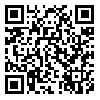BibTeX | RIS | EndNote | Medlars | ProCite | Reference Manager | RefWorks
Send citation to:
URL: http://jdisabilstud.org/article-1-3564-fa.html

 ، چنگیز رحیمی*2
، چنگیز رحیمی*2 

2- استاد، دانشگاه شیراز، شیراز، ایران
چکیده
زمینه و هدف: اختلال بیشفعالی/نقص توجه یکی اختلالات روانپزشکی با شیوع فراوان است. پژوهش حاضر باهدف بررسی اثربخشی تحریک مستقیم الکتریکی فراجمجمهای مغز بر شادکامی نوجوانان ۱۶تا۱۸ساله دارای اختلال بیشفعالی/نقص توجه شهرستان شیراز انجام شد.
روشبررسی: روش این پژوهش، نیمهآزمایشی با طرح پیشآزمون و پسآزمون همراه با گروه گواه بود. از بین نوجوانان دارای اختلال بیشفعالی/نقص توجه مراجعهکننده به کلینیکهای روانشناسی و روانپزشکی شهرستان شیراز در سال ۱۴۰۳، سی نفر داوطلب واجد شرایط بهشکل دردسترس در دامنۀ سنی ۱۶تا۱۸ سال وارد پژوهش شدند. سپس ازطریق گمارش تصادفی پانزده نفر در گروه مداخله و پانزده نفر در گروه گواه قرار گرفتند. امتیازات متغیر شادکامی بهوسیلهٔ پرسشنامهٔ شادکامی آکسفورد (آرگیل و همکاران، ۱۹۸۹) در دو نوبت زمانی قبل و بعد از درمان تحریک مستقیم الکتریکی مغز مقایسه شد. تحلیل دادهها بااستفاده از تحلیل کوواریانس در نرمافزار SPSS نسخهٔ ۲۲ صورت پذیرفت. سطح معناداری آزمونها ۰٫۰۵ بود.
یافتهها: نتایج مشخص کرد، میانگین نمرات متغیر شادکامی در نوجوانان دارای اختلال بیشفعالی/نقص توجه در گروه مداخله و بعد از دریافت درمان درمقایسه با گروه گواه، بهطور معناداری افزایش پیدا کرد (۰٫۰۰۱>p). براساس نتایج مربوط به اندازۀ اثر، ۶۴درصد از تفاوت بین گروه مداخله و گروه گواه در متغیر شادکامی ناشیاز تحریک الکتریکی مغز بود.
نتیجهگیری: نتایج این پژوهش نشان داد، از تحریک مستقیم الکتریکی فراجمجمهای مغز میتوان بهعنوان درمانی احتمالاً مؤثر برای بهبود شادکامی نوجوانان دارای اختلال بیشفعالی/نقص توجه استفاده کرد.
| بازنشر اطلاعات | |
 |
این مقاله تحت شرایط Creative Commons Attribution-NonCommercial 4.0 International License قابل بازنشر است. |


